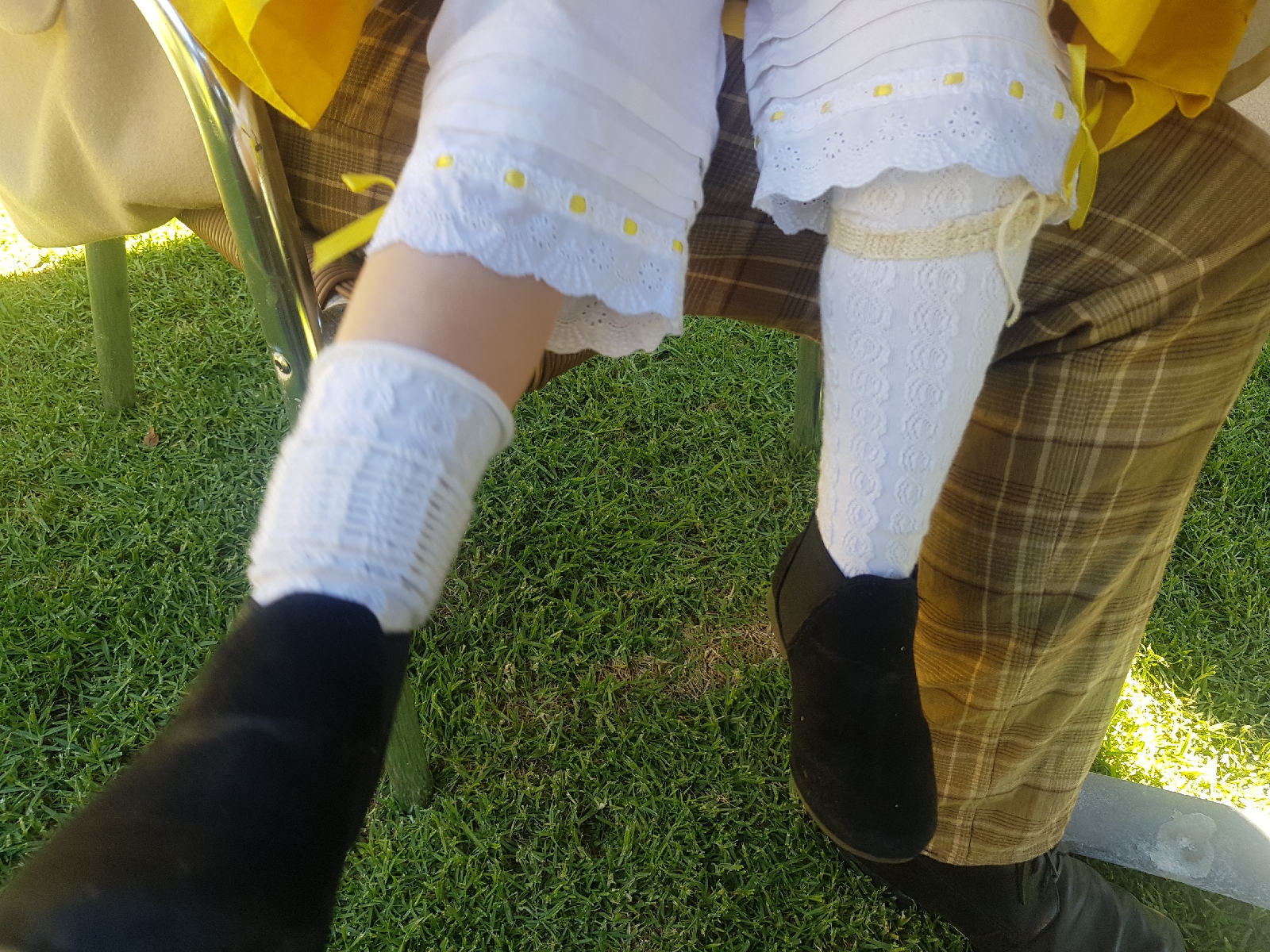For the past few years all my sewing seems to have been focused on Amelia May, Nic or mending. My wardrobe is sadly in need of updating. Much of my undergarments were made for my wedding 10 years ago this November.
I came to this realisation 2 weeks ago when repairing inner seams on some drawers and replacing hooks and eyes on bodices. Somme of the hooks were seriously deformed.
When I first started in living history I only had basic sewing knowledge. I've now made so many amazing garments I figured it was time to make something special for me. 10 years ago I purchased this book '60 Civil War-Era Fashion Patterns'. In this book is a collection of patterns from Peterson's Magazine. It has had years of ogling and post-it-note plans. I've now decided to actually start making some items I've dreamed of for years.
Due to my needs, I chose to start with the 1860s chemise. I really try not to reinvent the wheel. I had 2 similar period patterns that I was able to adapt to help me make my pattern.
Simplicity 2890 had the same front and back shape, as well as a similar front panel and sleeve.
I then had to adjust the front panel to match the pattern diagram.
As I knew this was only a learning exercise I decided to make it issuing a fitted sheet that was in excellent condition, but it's elastic had decomposed, so it was no longer usable. I purchased some cheap cotton ribbon for this chemise with the intention to use nicer vintage ribbon later on a finer version.
Once I had my pattern I made multiple pin tucks to get a size and distance that would balance nicely.
I also discovered that pin tucks and insertion lace can be quite tricky to do together. In the past I've only ever seen one or the other. This took me a few days to perfect as the illustration and diagram had different pin tuck directions. after trying both I found the diagram with the tucks in facing the same direction was far nicer looking. I also had to adjust it a few times as my original pattern was too long.
I did have to adjust it to be a slight bit shorter. Some patterns skip the gores, but I believe they make the chemise stronger and help it to sit nicer around the hips while having less fabric around the waist that can be bulky under a corset.
The buttons are small shell buttons that I purchased years ago from an op shop. They had been salvaged from garments that were not saleable.
The chemise came together very smoothly due to adapting the pre made pattern pieces. While it took longer than expected I now have an amazing chemise that is very comfortable and a completed pattern. I am also looking forward to constructing the nice version with finer and wider insertion lace. I just need to find a matching edging lace.
The front of the completed chemise.
The back of the completed chemise.
























































